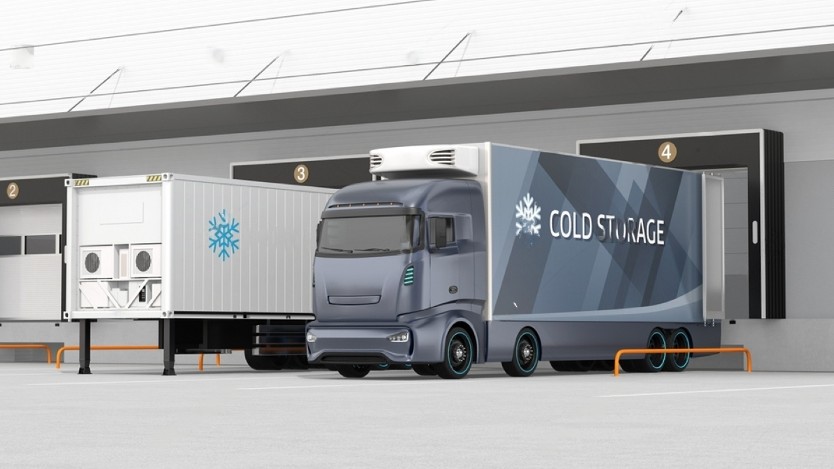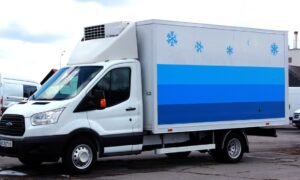In India’s expanding cold supply chain, the often-overlooked last-mile delivery infrastructure holds the key to unlocking its full potential. This article explores why it’s a critical piece of the puzzle.
In the vast and diverse landscape of the Indian cold supply chain, one critical piece often overlooked is the hyperlocal, last-mile delivery infrastructure. While the cold supply chain market in India has been growing steadily, its full potential remains untapped due to fragmented approaches and an insufficient focus on the final stretch of the journey. This article delves into why an unbroken cold supply chain is incomplete without a robust hyperlocal, last-mile delivery infrastructure.
The Indian cold supply chain market
The Indian cold supply chain market has been on an upward trajectory, primarily driven by the increasing demand for perishable goods such as fruits, vegetables, dairy products, and pharmaceuticals. As of my last knowledge update in September 2021, the cold chain market in India was valued at approximately $16 billion, with significant growth potential.
India’s government recognized the importance of a robust cold supply chain and has introduced policies and initiatives to support its development. This includes the Pradhan Mantri Kisan SAMPADA Yojana and the National Centre for Cold-chain Development (NCCD). These initiatives aim to strengthen the infrastructure for the preservation and transportation of perishable produce, ensuring that they reach consumers in the best possible condition.
Post-COVID growth and challenges
The COVID-19 pandemic accelerated the need for efficient cold supply chains, particularly for vaccines and pharmaceuticals. This crisis highlighted the vulnerabilities in our supply chain infrastructure and underscored the urgency of enhancing cold chain capabilities.
However, despite these advancements and growth opportunities, the cold supply chain sector in India faces a persistent challenge: fragmentation. Most investments and innovations have been concentrated in creating temperature-sensitive warehouses with advanced control and monitoring technologies and in improving bulk transportation capabilities. While these are crucial aspects, the focus on hyperlocal, last-mile deliveries has often been lacking.
The last-mile delivery conundrum
The last-mile delivery segment, especially in the cold supply chain, is where the brand meets the customer. It’s the final link in the chain, and its professionalism and technological sophistication directly reflect on the brand and the service provider. This segment plays a pivotal role in ensuring customer trust, satisfaction, and loyalty.
Unfortunately, many cold chain operators and brands still rely on outdated and inefficient processes for last-mile deliveries. This includes the use of archaic temperature control methods such as thermocol boxes, which can render the entire cold supply chain ineffective. These outdated practices not only compromise the quality and safety of perishable goods but also tarnish the brand’s reputation.
Building a robust hyperlocal, last-mile delivery infrastructure
To complete the cold supply chain puzzle, stakeholders must prioritize the hyperlocal, last-mile delivery infrastructure. Here are some key steps operators and brands can take:
Invest in Technology: Embrace modern technology solutions like GPS tracking, real-time temperature monitoring, and route optimization software to ensure the safe and efficient delivery of temperature-sensitive products.
Fleet Modernization: Upgrade delivery vehicles to maintain precise temperature control throughout the journey and reduce energy consumption.
Skilled Workforce: Train and equip delivery personnel with the necessary skills and knowledge to handle perishable goods professionally and maintain the cold chain integrity.
Customer-Centric Approach: Prioritize customer convenience and satisfaction by offering flexible delivery schedules, real-time tracking, and responsive customer support.
Impact on Business Growth and Customer Trust
A robust hyperlocal, last-mile delivery infrastructure can significantly impact business growth and customer trust and loyalty. Here’s how:
Improved Brand Reputation: Professionalism and reliability in last-mile deliveries enhance brand perception and trust among customers.
Market Expansion: A seamless last-mile experience enables businesses to expand their reach and tap into new markets, increasing revenue opportunities.
Customer Retention: Consistently delivering high-quality, fresh products cultivates customer loyalty and encourages repeat purchases.
Cost Efficiency: Efficient last-mile operations reduce operational costs and increase profitability.
In conclusion, an unbroken cold supply chain in India is incomplete without a robust hyperlocal, last-mile delivery infrastructure. As the market continues to grow and consumer expectations evolve, stakeholders must prioritize this critical segment. By investing in technology, modernizing fleets, training personnel, and adopting a customer-centric approach, businesses can not only complete the cold supply chain but also thrive in an increasingly competitive market, building trust and loyalty along the way.
Expertise shared by: Swarup Bose, Celcius Logistics Solutions
Cookie Consent
We use cookies to personalize your experience. By continuing to visit this website you agree to our Terms & Conditions, Privacy Policy and Cookie Policy.















